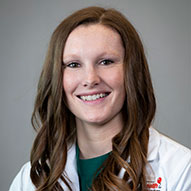Plano
469-303-3000
Fax: 469-303-4520
Frisco
469-303-3000
Fax: 469-303-4520
Prosper
469-303-3000
Fax: 469-303-4520
Request an Appointment with codes: Andrews Institute (Sports Medicine)
469-303-3000
Fax: 469-303-4520
469-303-3000
Fax: 469-303-4520
469-303-3000
Fax: 469-303-4520
Request an Appointment with codes: Andrews Institute (Sports Medicine)
People use the term “tendinitis” to refer to all kinds of injury to a tendon (the tissue that connects muscles to bones and other parts of the body). The proper term is actually “tendinopathy,” and tendinitis is one common form of tendinopathy.
At Children’s Health Andrews Institute for Orthopaedics & Sports Medicine, we treat these problems with a team of doctors, physical therapists (PT), sports medicine specialists and other experts to help children get back to the activities they love and avoid future injury.
There are three types of tendinopathy:
Tendinitis is when a tendon is strained or inflamed, which often means it hurts to move or use that part of the body.
Tendinosis is when a tendon gradually breaks down and weakens over time. Generally, this affects adults, but may also happen to older children.
Paratenonitis is when the sheath or covering that surrounds the tendon (called the paratenon) gets damaged from repeatedly rubbing against the tendon it surrounds or against a nearby bone.
We diagnose most tendinopathies by talking with children about their symptoms and activity and doing a simple physical exam, to see what movements or actions they have trouble with. If the child is older and we think they might have tendinosis, we will often do an MRI or ultrasound to see how much the tendon has worn down and what is the best kind of treatment.
Most forms of tendinopathy come from repetitive or strenuous movement that causes the tendon to swell or tear. We often see athletes who develop tendinopathy from activities like swinging bats or tennis rackets or repeatedly jumping during practice.
Most children will fully recover from a tendinopathy within a few weeks by resting and icing their injured tendon. Depending on the type of injury, we may recommend wearing a compression sleeve or brace or taking medicine to reduce swelling.
To help your child continue their favorite activities without getting hurt again, we’ll teach your child exercises and stretches that build strong and limber muscles all around the tendon that was injured. We will also train them in techniques for running, swimming and other athletics that will help keep them from re-injuring the tendon.
At Children’s Health Andrews Institute for Orthopaedics & Sports Medicine, your child is cared for by a range of experts in orthopedics, sports medicine and physical therapy, all of whom specialize in treating kids and adolescents. Our team includes people with expertise in specific activities, such as running and dance, who help children practice the healthiest form and technique for their bodies.















After two to four weeks of rest, a child can usually do limited activity with their injured body part. Most children can resume full activity four to six weeks after being injured.
The best way to avoid these kinds of injuries is through physical conditioning. That includes doing proper warm-ups before activity, practicing proper technique for athletic movements, and cross-training so that your child develops supporting muscles. For example, if your child developed hamstring tendinitis (which affects the back of the leg) from playing soccer, they can protect their hamstring in the future by strengthening all the muscles of the leg, through an activity such as cycling.